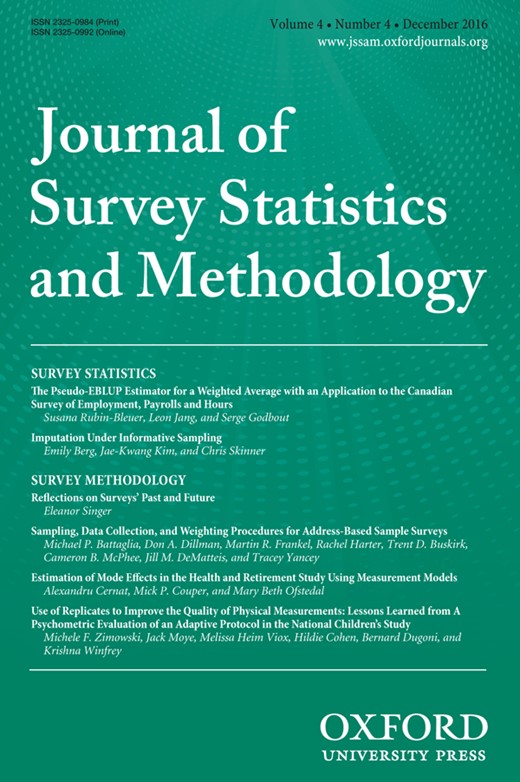-
Views
-
Cite
Cite
Michele F. Zimowski, Jack Moye, Melissa Heim Viox, Hildie Cohen, Bernard Dugoni, Krishna Winfrey, Use of Replicates to Improve the Quality of Physical Measurements: Lessons Learned from A Psychometric Evaluation of an Adaptive Protocol in the National Children's Study, Journal of Survey Statistics and Methodology, Volume 4, Issue 4, December 2016, Pages 525–554, https://doi.org/10.1093/jssam/smw029
Close - Share Icon Share
Many large-scale surveys incorporate physical measures into data collection to gather information on the health or physical development of sample members. One mechanism commonly employed to improve the quality of physical measurements collected in the field and elsewhere is the use of replicates, or repeated measurements. Theory suggests that the reliability of the mean of multiple measurements will be higher than that of a single measurement; likewise, the reliability of the mean of three measurements should be higher than that of two measurements. However, the added reliability from a replicate may be marginal compared to the additional burden placed on participants and project resources. To date, little attention has been paid to the ideal number of replicate measurements for anthropometric measures, though such studies are important to justify the cost and burden of additional replicates. Analyzing data from the National Children’s Study (NCS) Vanguard Study, we examine the added value of a third replicate, collected with an adaptive protocol, on 10 anthropometric measures. Using psychometric theory to predict the impact on reliabilities if all data collectors took three replicate measurements, we compare the results to empirical estimates obtained with the NCS adaptive protocol. We find that the data quality of certain measures (e.g., skinfolds) could be improved by lowering the threshold values for collecting third measurements and that three replicates may not be necessary to achieve high reliabilities for other measures (e.g., standing height and weight). As a whole, these results suggest that the ideal number of repeated measurements depends upon the measure itself, as well as the intended use of the data and desired level of precision.







